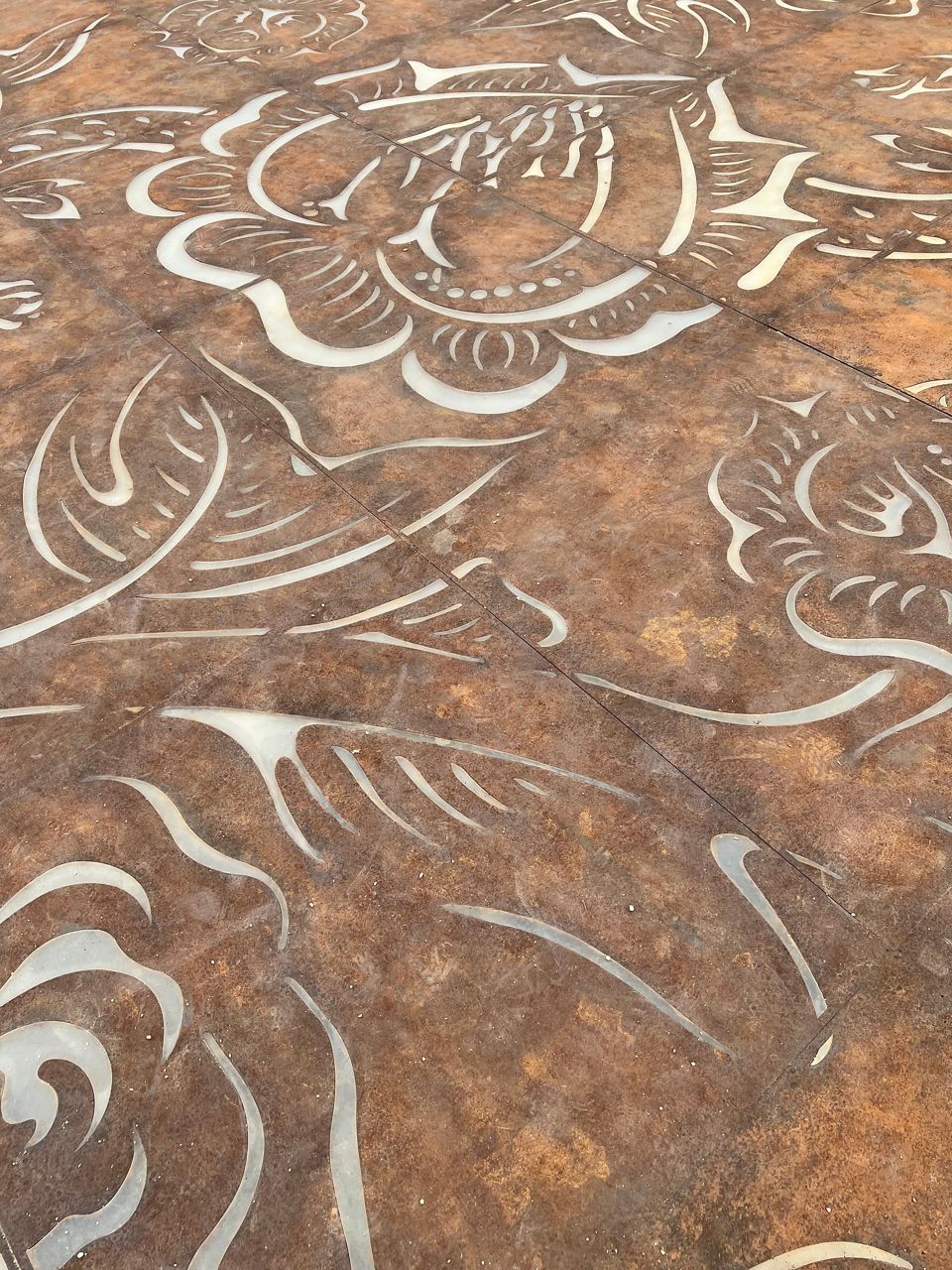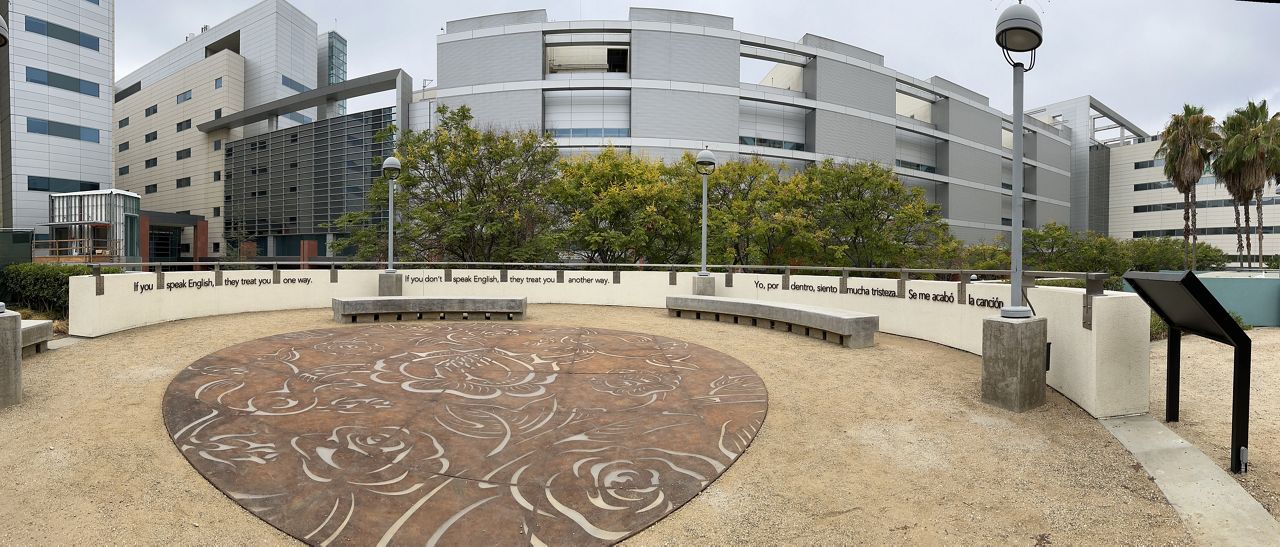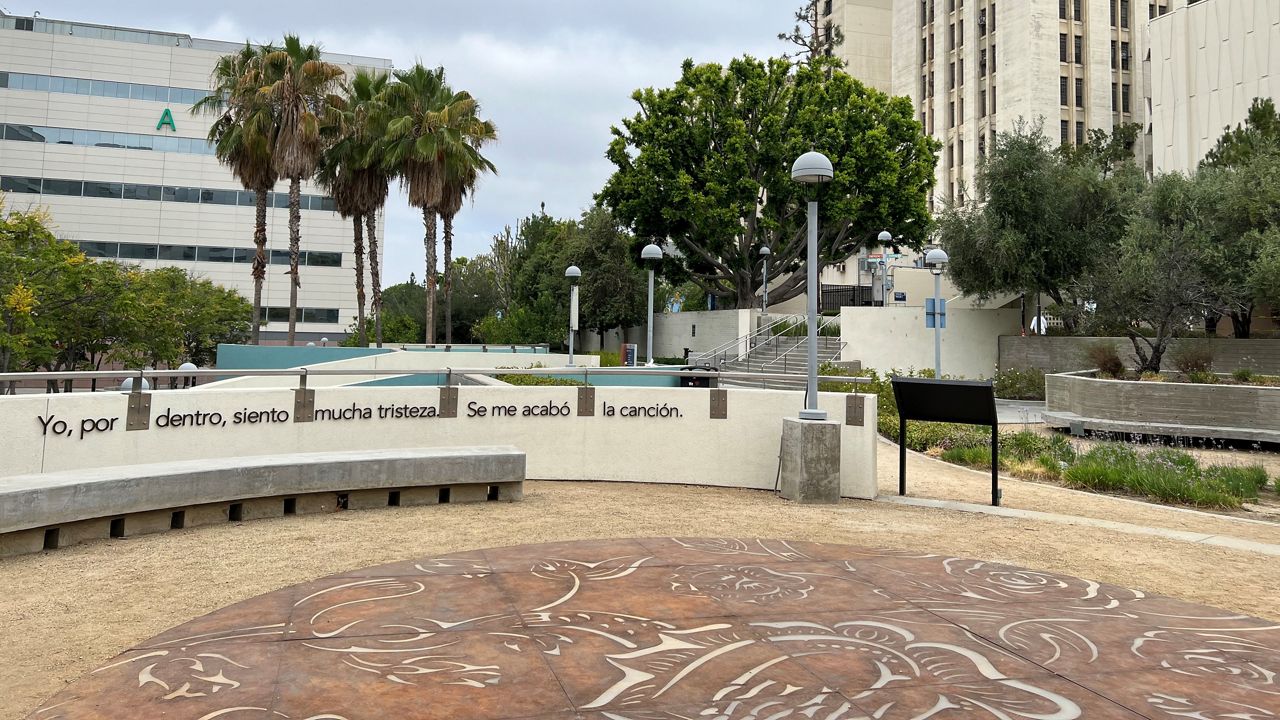LOS ANGELES — On the Los Angeles County-USC Medical Center campus in Boyle Heights, next to the historic art deco General Hospital building, sits a quiet garden that connects the past to the present and sheds light on a dark chapter in the nation's history.
In the garden, a circular monument titled “Sobrevivir,” which in English means “to survive,” serves as a reminder of a time when Latinas were coerced into sterilization, hospital CEO Jorge Orozco said in a phone interview.

For decades, the procedure was commonplace at state and private institutions in the '60s and '70s, including many local hospitals. Although poor people and those with a disability were among those deemed unfit to have children under the state's eugenics law, most of the victims were Latinas, he said.
"It's not without controversy to have an art piece like that on our campus. It's not meant to be critical of our OBGYN team, who provide world-class care. It serves as a reflection of the past and an apology," Orozco said.
At first, the project was going to be a plaque after the Board of Supervisors formally apologized to the victims in 2018 for the county's actions.
"We decided we wanted a big-scale artwork to serve as a reminder of this dark past — in a prominent place," Orozco said.
LA artist Phung Huynh was eventually selected to create something "impactful, and that would be there forever," she said in a phone interview.
Huynh was inspired by the documentary "No Mas Bebe," which tells the story of Mexican immigrant mothers who were sterilized at the county hospital after giving birth.
In 1978, the women sued the county hospital in Madrigal v. Quilligan, a civil rights class action lawsuit, but lost the case.
It wasn't until March 2013 that then-Gov. Gray Davis acknowledged and apologized to the victims and their families. And in July 2021, Gov. Gavin Newsom signed a budget that set aside $7.5 million for reparations to the victims.
Huynh, who described herself as a painter and not a sculptor, decided to create the art piece from corten steel, a strong material that she made resemble Mexican leatherwork seen on belts or huaraches, Mexican sandals. It includes roses — a symbol of fertility and offerings — surrounding the praying hands of Our Lady of Guadalupe, which is such a part of LA and Mexican heritage, she said.
"It is not my story, but I'm here to be a conduit, so this history is not forgotten," Huynh said.
She added she had to mull over how she would express an apology and also "be respectful and honor the moms."
The "beautiful and powerful" piece "serves as a point to reflect and atone for past actions," Orozco said, adding it is illuminated at night.
Benches and quotes from victims in the documentary line the surrounding concrete walls. Huynh said the "biggest part for me was to listen and hear from the survivors."

"If you speak English, they treat you one way. If you don't speak English, they treat you another way," reads one quote.
Another in Spanish reads, "Yo, por dentro, siento mucha tristesa. Se me acabó la canción," which translates to "Inside, I feel very sad. The song has ended for me."
The artist also engaged the community in helping make four quilts along with the public art piece. In September, Huynh will present the quilts at the Vincent Price Art Museum before they are permanently displayed at the hospital on Marengo Street.
"Art is healing," Orozco said of the piece that is open to the public. "We hope it leads to healing for the community."



